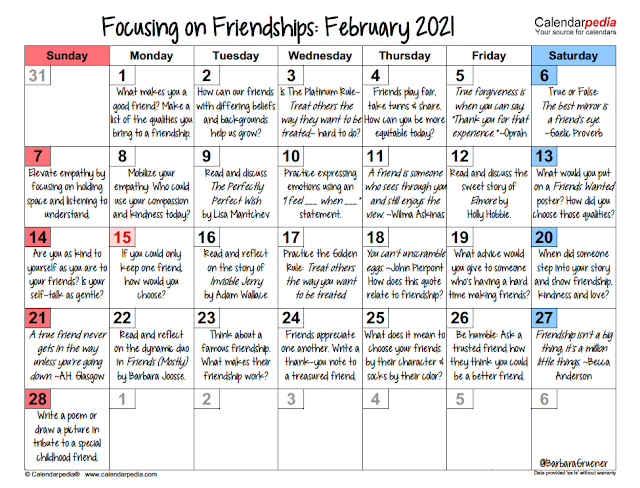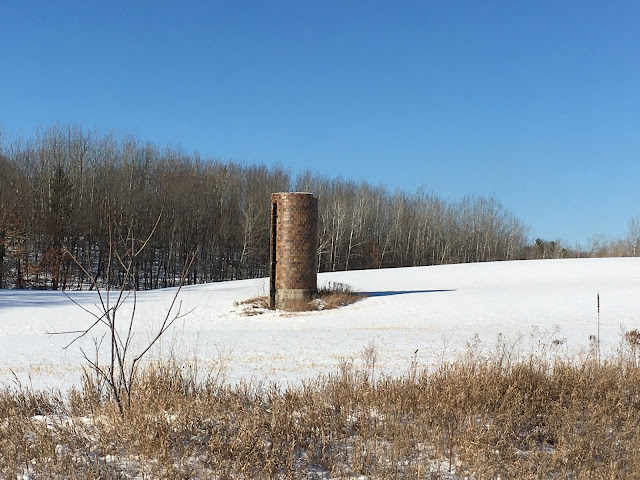How can it be that in less than a week it'll be February already?
In preparation, I spent yesterday making this friendship resource.
Have you ever tried to create one of these reflection calendars? For years, I made a holiday Connections Countdown calendar, but in November I wrote my first self-care calendar, then in December I created my first hyperlinked calendar, making it a more interactive resource. In January, after a reader reached out to see if I was going to make another calendar, I picked JOY as the theme. Such a cool challenge that fuels my purpose as I fill the days with practical tips, ideas, and strategies to feed our souls.
If I still worked in a school of my own, I'd like to invite students
to help create one of these for every month of the year.
It'd be so interesting to know which daily reminders they'd want and need; it'd also be a fun way to move from me to WE by asking their opinions, hearing their voice, sharing their feedback and feelings, which leads me into what I've been pondering on lately, today's topic of going from silos ...
to bunkers.
So let's start with the silo.
Historically, silos have been used by farmers to store grain.
Crops were harvested and blown into this tall tower, then dropped
by auger as needed to feed the animals between seasons.
Some were brick, others were cement.
The blue Harvestores were metal.
They worked for years and years.
Until some dairy herds grew so big and
that design simply couldn't keep up anymore.
When the herd of Holsteins on our family farm increased from 500 to 2000, we went from storing grain in cylinder silos, which were expensive to build and keep up, to building these open-concept, easier-access bunker silos.
The bunkers are a more efficient, practical way to store the food and feed the masses. But what does this have to do with education?
I've been thinking a lot lately about silo working, the fixed mindset thought that if you want something done right, you need to do it yourself, the idea that I've got this, I'm fine, and I don't need any help.
Anyway, it's a little bit like the idea of a single point of failure,
where responsibility falls on the shoulders of just one person.
How often in life do we set ourselves up as single point of failures?
I know that as an educator, I was there pretty much every day.
I made decisions by myself all of the time. I guess you could say
that certain positions lend themselves to silo working.
But it doesn't have to be that way.
What if instead of serving from a silo in school, we built bunkers?
The bunker feeders would be a place where ALL are welcome, safe, brave spaces where we work together in trusting relationships, a readily-available spot where we come to nurture ourselves so we can feed our treasured students, colleagues, stakeholders, and friends more effectively and efficiently, to equip and empower.
Instead of working so hard to get feed from a cold, closed cylinder of cement, we now gather to collaborate, smorgasbord style, in a wide-opened, warm and welcoming bunker of
connection and curiosity,
empathy and equity,
hope and humanity,
learning and love.
I can hear the rally cry so clearly: Go Bunkers!
In any event, perhaps we in education could benefit
from what farmers have already figured out:
Bunkers work better.
How would your job change if you said
so-long lonely silo and hello beautiful bunkers?
Check out Breaking Down Silos by Dr. Brad Johnson
for more reflections on this important topic.
For those of you who are still reading, a few additional resources
that I've discovered worth sharing from the bunker this week:





















No comments
I really enjoy hearing from my readers; thanks for sharing your reflections with us!